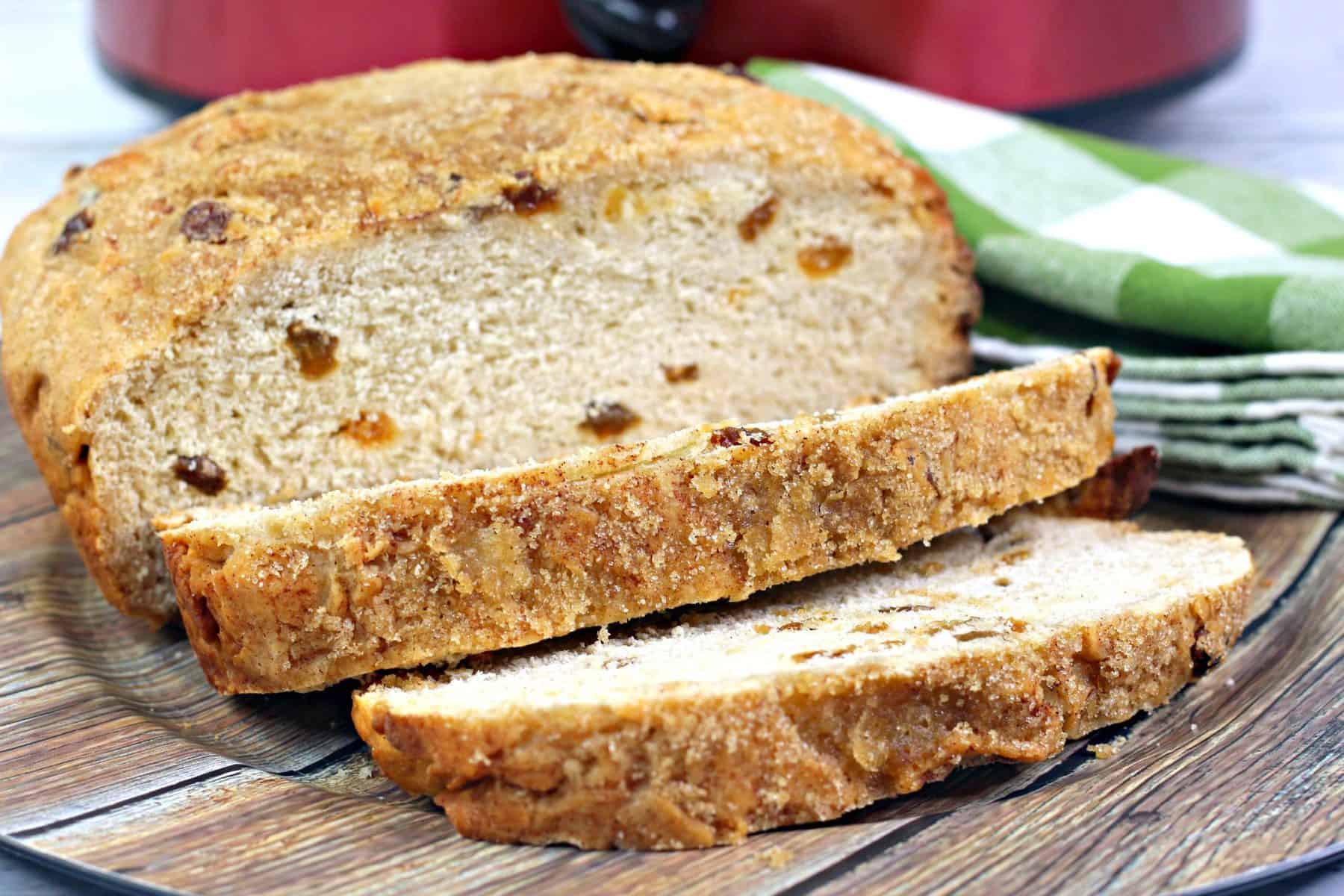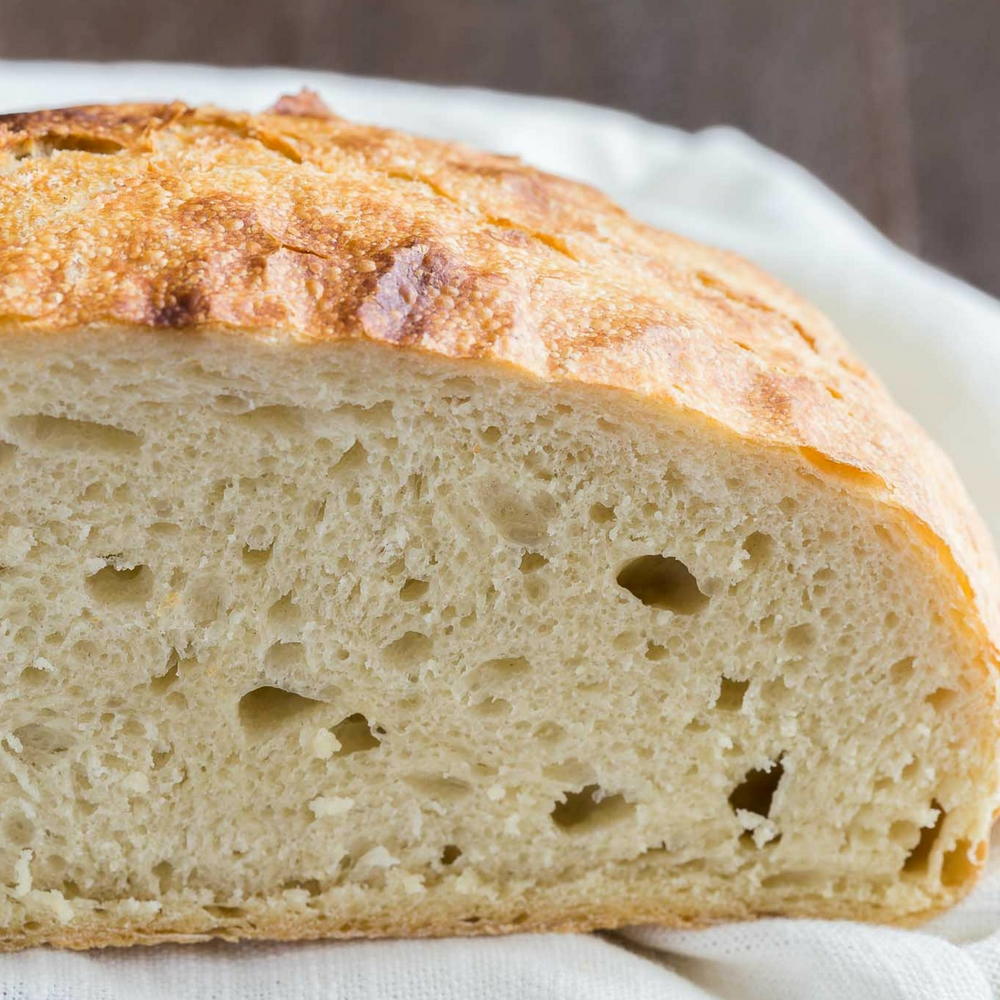Welcome to the world of slow cooker bread making, where convenience meets culinary excellence. Embark on a journey of aromas and flavors as we explore the art of creating delicious, homemade bread in the comfort of your own slow cooker.
With just a few simple ingredients and a touch of patience, you’ll be amazed at the transformative power of this versatile appliance.
From classic white loaves to hearty whole wheat wonders and tantalizing sourdough creations, the possibilities are endless. Whether you’re a seasoned baker or a novice in the kitchen, this guide will equip you with the knowledge and techniques to elevate your bread-making skills to new heights.
So, gather your ingredients, set aside some time, and let’s embark on a culinary adventure that will fill your home with the irresistible aroma of freshly baked bread.
Ingredients

Creating a delectable loaf of bread in a slow cooker requires a harmonious blend of essential ingredients. Each component plays a crucial role in shaping the final product’s texture, flavor, and nutritional value.
Flour, the foundation of any bread, provides the structure and backbone. It contains gluten, a protein that forms a network when combined with water, giving the bread its characteristic elasticity and chewiness. Whole wheat flour offers a higher fiber content and a nutty flavor, while all-purpose flour produces a lighter texture.
Bread flour, with its higher protein content, results in a more robust loaf with a chewy crumb.
Yeast
Yeast, a living organism, is the driving force behind bread’s rise. When combined with sugar and water, it activates and releases carbon dioxide gas, creating air pockets that give bread its airy texture. Active dry yeast and instant yeast are common choices, with the latter requiring no proofing and can be added directly to the dough.
Water
Water is essential for hydration and activating the yeast. The amount of water used affects the dough’s consistency, with a higher water content resulting in a softer loaf. However, too much water can make the dough sticky and difficult to handle.
Sugar
Sugar provides nourishment for the yeast, aiding in its activation and fermentation process. It also contributes to the bread’s flavor and browning during baking.
Salt
Salt enhances the bread’s flavor and helps control yeast activity, preventing over-proofing. It also strengthens the gluten network, contributing to the bread’s structure.
Variations and Substitutions
For those with dietary restrictions or preferences, various substitutions can be made. Gluten-free flours, such as almond flour or coconut flour, can replace wheat flour for gluten-free bread. Dairy-free milk or water can be used instead of cow’s milk for those with lactose intolerance.
Additionally, honey or maple syrup can be substituted for sugar for a natural sweetener.
Equipment
Slow cooker bread making requires a few essential pieces of equipment. The most important is, of course, the slow cooker itself. Not all slow cookers are created equal, so it’s important to choose one that is well-suited for bread baking.
The best slow cookers for bread baking have a large capacity (at least 6 quarts) and a low heat setting. This allows the bread to cook slowly and evenly, without burning or overcooking. Some slow cookers also have a “bread” setting, which is specifically designed for baking bread.
Slow Cooker Features
- Size: The size of the slow cooker will determine the size of the loaf of bread you can bake. A 6-quart slow cooker is a good size for most loaves of bread.
- Shape: The shape of the slow cooker will also affect the shape of the loaf of bread. A round slow cooker will produce a round loaf of bread, while an oval slow cooker will produce an oval loaf of bread.
- Heat settings: The heat settings on the slow cooker will determine how quickly the bread cooks. A low heat setting will cook the bread slowly and evenly, while a high heat setting will cook the bread more quickly.
- Bread setting: Some slow cookers have a “bread” setting, which is specifically designed for baking bread. This setting will automatically adjust the heat and cooking time to produce a perfect loaf of bread.
Step-by-Step Slow Cooker Bread Baking
Baking bread in a slow cooker is a simple and convenient method that yields a delicious and crusty loaf. Follow these steps for a successful baking experience:
Preparing the Dough
* In a large bowl, combine warm water, yeast, and a pinch of sugar. Let stand for 5 minutes, or until the yeast becomes foamy.
- Add flour, salt, and olive oil to the yeast mixture. Stir until a dough forms.
- Knead the dough on a lightly floured surface for 5-7 minutes, or until it becomes smooth and elastic.
Setting the Slow Cooker
* Grease the inside of a 3-4 quart slow cooker with butter or cooking spray.
Place the dough in the slow cooker and cover with a lid.
Baking the Bread
* Set the slow cooker to low heat.
- Cook the bread for 6-8 hours, or until it has risen and is golden brown.
- Remove the bread from the slow cooker and let cool on a wire rack before slicing and serving.
Troubleshooting Tips
* If the bread is too dense, it may not have risen enough. Try increasing the amount of yeast or letting it rise for a longer period before baking.
- If the bread is too dry, it may have been overcooked. Try reducing the cooking time or adding more liquid to the dough.
- If the bread is too pale, it may not have been cooked long enough. Try increasing the cooking time or setting the slow cooker to a higher heat setting.
4. Variations

Slow cooker bread baking offers endless possibilities for creativity and customization. Explore a wide range of bread variations to suit your preferences and culinary adventures.
Bread Types
- White Bread: Classic and versatile, white bread is a popular choice for sandwiches, toast, and everyday meals.
- Wheat Bread: Rich in fiber and nutrients, wheat bread provides a wholesome alternative with a nutty flavor.
- Sourdough Bread: Known for its tangy sourdough flavor and dense texture, sourdough bread is a great option for artisan-style loaves.
- Specialty Breads: Experiment with specialty breads like focaccia, cornbread, and banana bread for unique flavors and textures.
Flavor Combinations and Add-Ins
Enhance the taste and texture of your slow cooker bread with a variety of flavor combinations and add-ins:
- Herbs and Spices: Add dried herbs like rosemary, thyme, or oregano for a savory twist.
- Seeds and Nuts: Incorporate seeds like sunflower seeds, pumpkin seeds, or chopped nuts for added crunch and flavor.
- Cheese: Shredded cheese, such as cheddar or Parmesan, adds a cheesy and flavorful touch.
- Fruit and Vegetables: Diced fruits like apples, raisins, or carrots add sweetness and moisture.
Benefits
Utilizing a slow cooker for bread making offers numerous advantages. The extended cooking time allows for a gradual rise, resulting in a loaf with an even, fine-grained texture. The slow, gentle heat promotes the development of complex flavors, enhancing the bread’s overall taste and aroma.
Moreover, slow cooking preserves the bread’s nutritional value. The extended cooking time allows for the breakdown of complex carbohydrates, making them more easily digestible. Additionally, the slow cooker environment retains moisture, preventing the bread from drying out and preserving its essential nutrients.
Convenience and Ease
Preparing bread in a slow cooker is remarkably convenient and straightforward. Simply combine the ingredients, pour the batter into the slow cooker, and set the desired cooking time. The slow cooker will take care of the rest, allowing you to attend to other tasks while your bread bakes.
Unlike traditional oven baking, which requires constant monitoring and temperature adjustments, slow cooker bread making requires minimal effort. The slow cooker’s consistent, low heat ensures that your bread will bake evenly without the risk of burning or overcooking.
Troubleshooting
Baking bread in a slow cooker requires attention to detail and careful execution. Troubleshooting potential issues can help ensure a successful outcome.
If your slow cooker bread does not turn out as expected, here are some common problems and solutions to consider:
Common Problems and Solutions
- Dense or undercooked bread: Ensure accurate measuring of ingredients, especially the yeast. Increase the cooking time by 30-60 minutes or raise the temperature by 5-10 degrees Celsius (10-15 degrees Fahrenheit).
- Overcooked bread: Reduce the cooking time by 15-30 minutes or lower the temperature by 5-10 degrees Celsius (10-15 degrees Fahrenheit).
- Soggy crust: Allow the bread to cool completely in the slow cooker with the lid off. Consider baking it in the oven for 10-15 minutes at 180 degrees Celsius (350 degrees Fahrenheit) to crisp up the crust.
- Bread sticking to the slow cooker: Grease the slow cooker insert thoroughly with butter or cooking spray. Use a non-stick slow cooker liner for easy removal.
- Burnt bread: Ensure the slow cooker is on a low heat setting. Avoid overcooking by monitoring the bread and adjusting the cooking time as needed.
Adjusting Cooking Time and Temperature
Cooking time and temperature can vary depending on the size of the loaf and desired crust:
- Small loaf (500-750g): Cook for 4-5 hours on low or 2-3 hours on high.
- Medium loaf (750-1000g): Cook for 5-6 hours on low or 3-4 hours on high.
- Large loaf (1000-1250g): Cook for 6-7 hours on low or 4-5 hours on high.
- Darker crust: Increase the cooking time by 15-30 minutes or raise the temperature by 5-10 degrees Celsius (10-15 degrees Fahrenheit).
- Lighter crust: Decrease the cooking time by 15-30 minutes or lower the temperature by 5-10 degrees Celsius (10-15 degrees Fahrenheit).
Summary
As we conclude our exploration of slow cooker bread making, remember that the true magic lies in the joy of creating something truly special in your own kitchen. Whether you’re impressing your family with a homemade loaf or sharing your creations with loved ones, slow cooker bread is a testament to the power of patience and the satisfaction of a job well done.
So, experiment with different flavors, perfect your techniques, and savor every bite of your slow cooker bread masterpiece.
Common Queries
Is slow cooker bread as good as oven-baked bread?
Absolutely! Slow cooker bread may even have an edge over oven-baked bread in terms of texture. The extended cooking time in a slow cooker allows the dough to rise slowly and evenly, resulting in a loaf with a tender crumb and a crisp, golden crust.
Can I use any type of slow cooker for bread making?
While most slow cookers can be used for bread making, a larger slow cooker with a 6-quart or larger capacity is recommended. This provides ample space for the dough to rise and expand during baking.
How can I prevent my slow cooker bread from becoming too dense?
To achieve a light and fluffy loaf, ensure you measure your ingredients accurately and avoid over-mixing the dough. Additionally, using high-quality bread flour or a combination of bread flour and all-purpose flour can contribute to a better rise.
